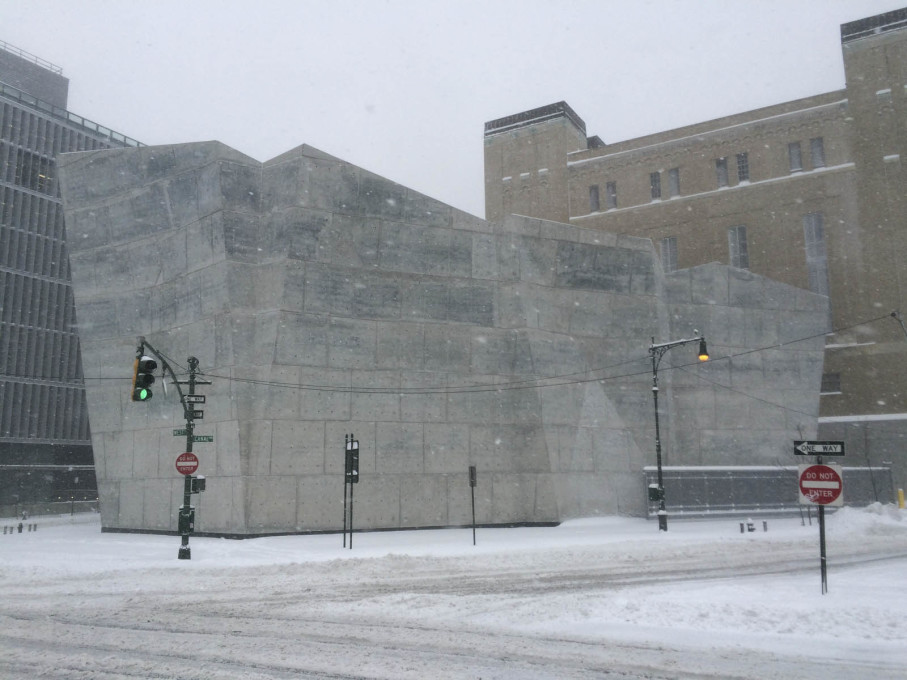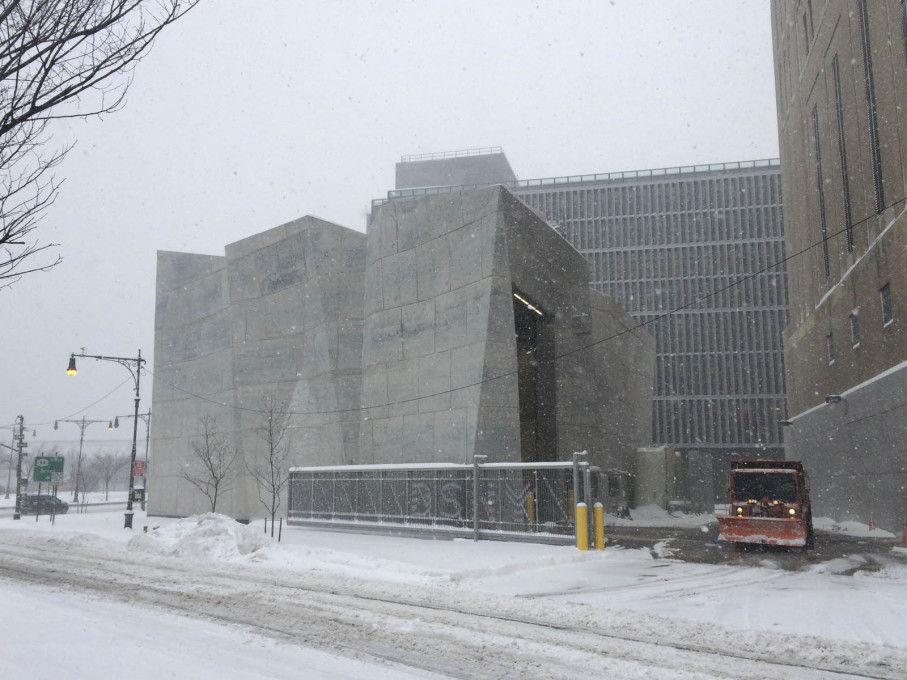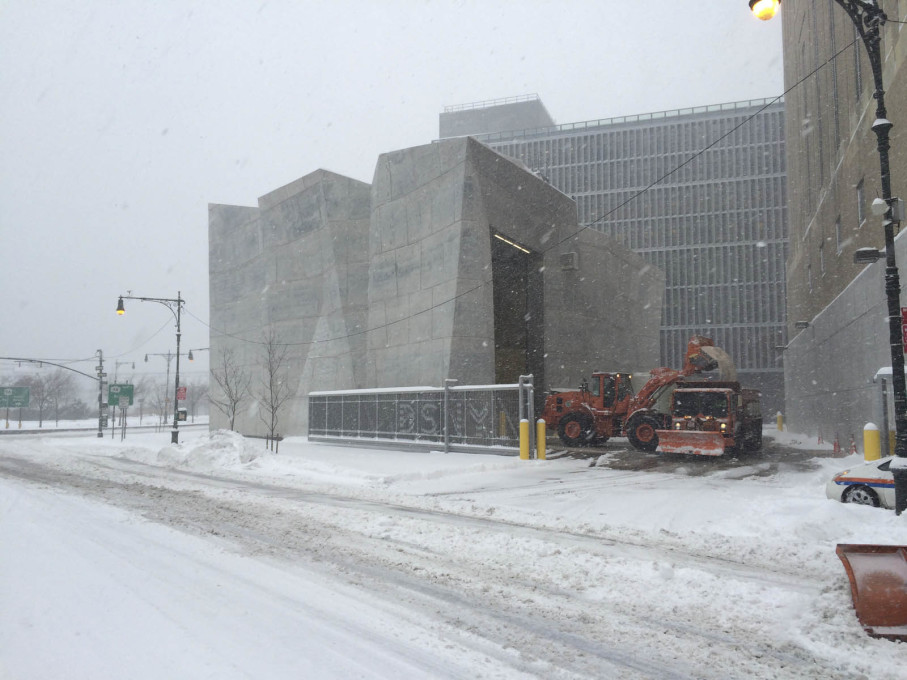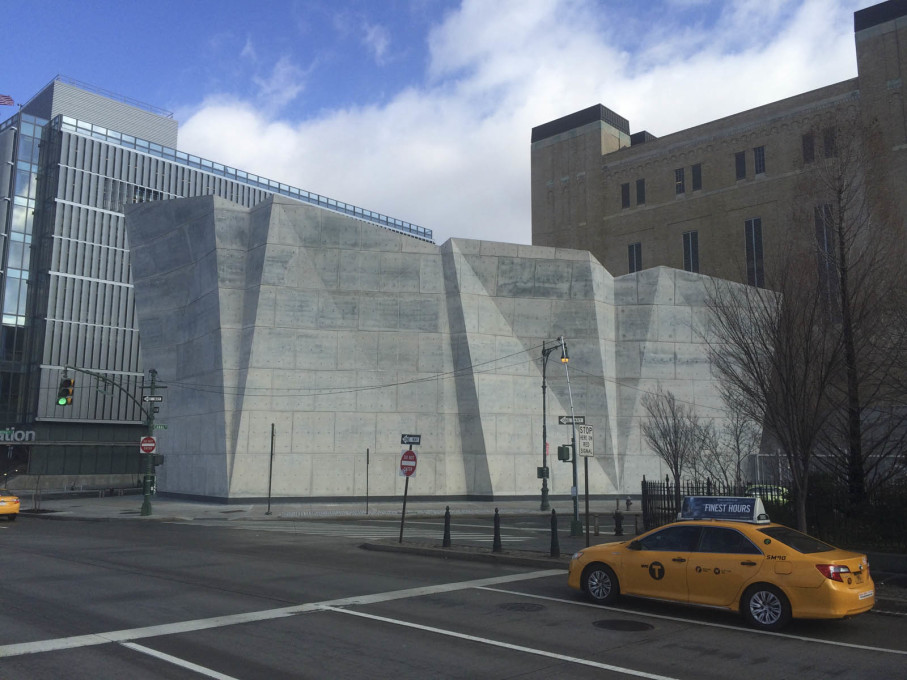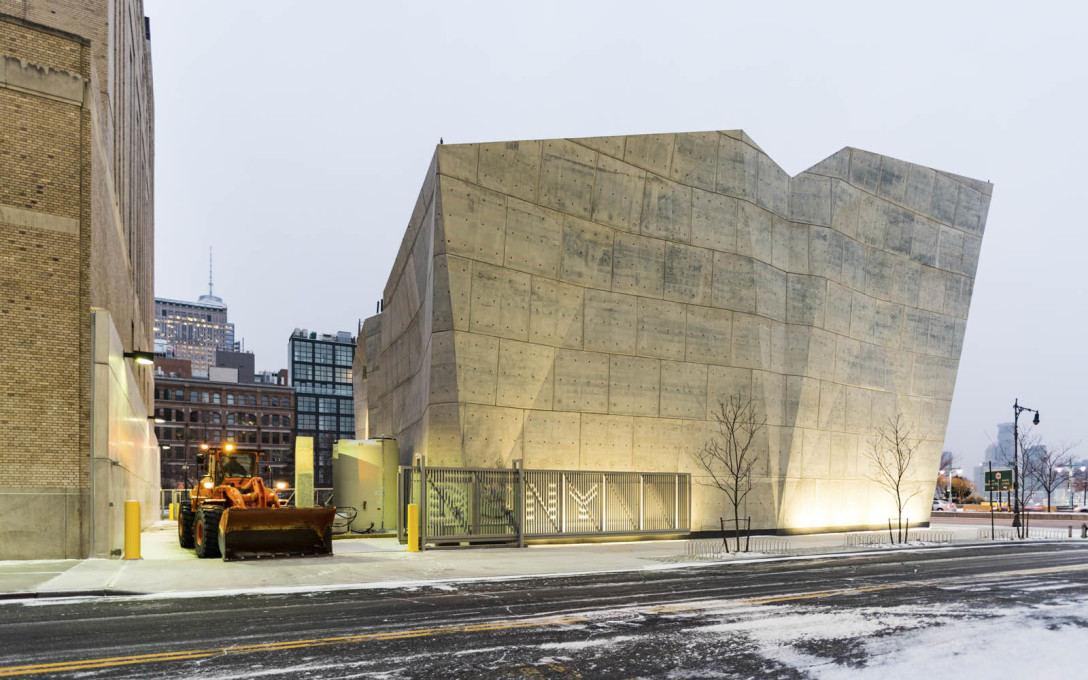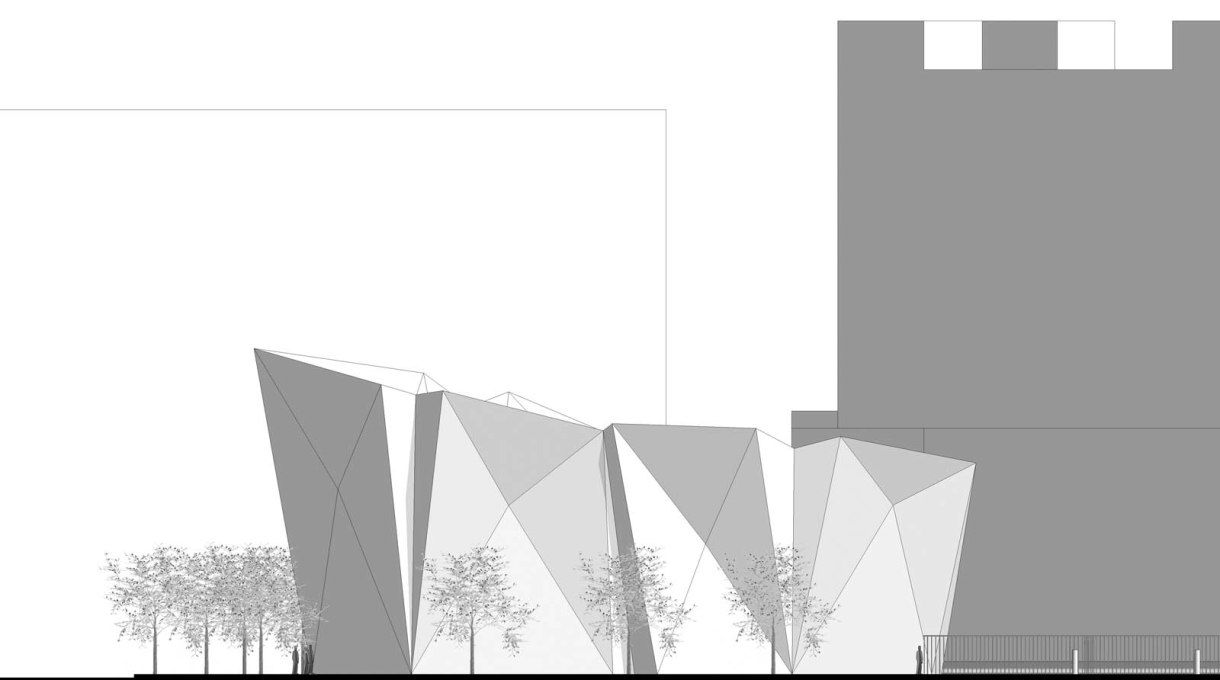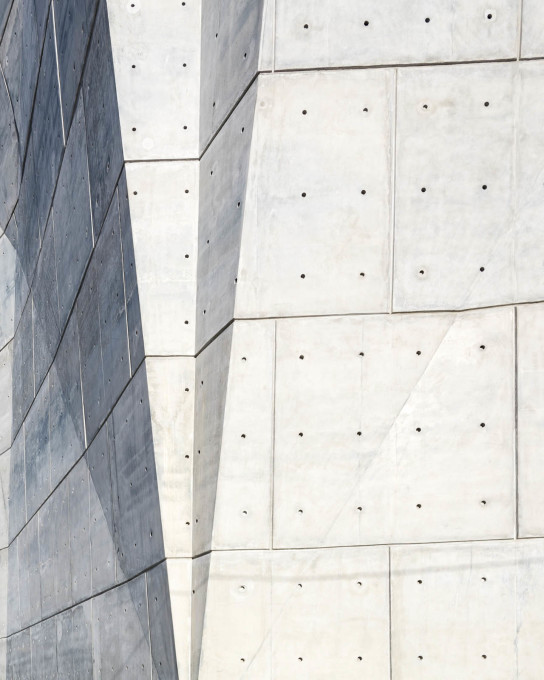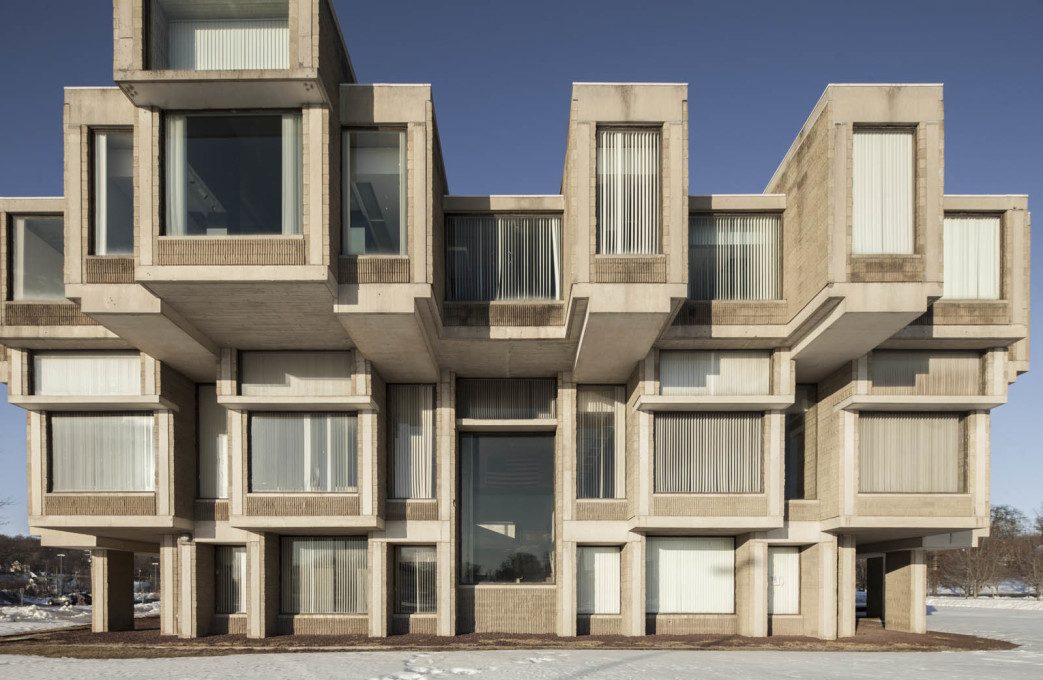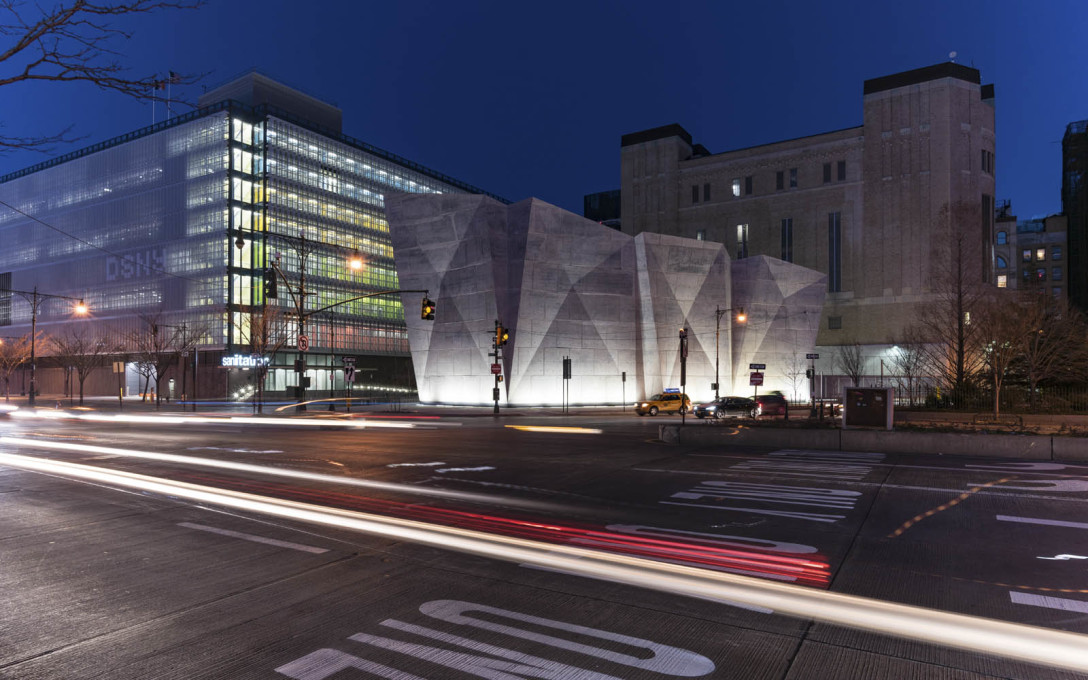Controversial already, on account of its lengthy and expensive construction period, the brand new Spring Street salt shed in NY was gifted an early opportunity to shine in January 2016 as Winter Storm Jonas brought New York City to a snowy standstill. uncube correspondent David Bench braved the blizzard and found the structure sculpturally striking, convincingly functional and thoroughly worth its salt.
One of New York’s newest pieces of infrastructural architecture was functionally welcomed into the world last month by Winter Storm Jonas, one of the largest blizzards in the city’s history. After having witnessed a mild early winter season, the Spring Street salt shed by Dattner Architects and WXY Architecture + Urban Design sprung into action as it serviced thousands of salt spreaders racing to keep the city streets from becoming impassable under a blanket of snow.
This bold concrete edifice served its purpose well during the storm – both as a place of storage and the point of distribution for the suddenly much-in-demand salt. Rare and refreshing is the piece of architecture that has such a limited set of functional requirements. With simply three walls and a roof, all made of cast-in-place concrete, it is a béton monolith. Its blank, canted walls angle up towards the West Side Highway it faces, and its only opening is at the rear – a garage door off the street facing an adjacent ventilation building for the Holland Tunnel.
The salt shed and a neighbouring car park, commissioned by the New York City Department of Sanitation and Department of Design & Construction, were the subject of vehement opposition during their design and construction phases, but criticism has turned into praise since the buildings have opened. The shed has become a welcome sculptural addition along the west-side waterfront, at home among the luxury condominium towers to its north and south.
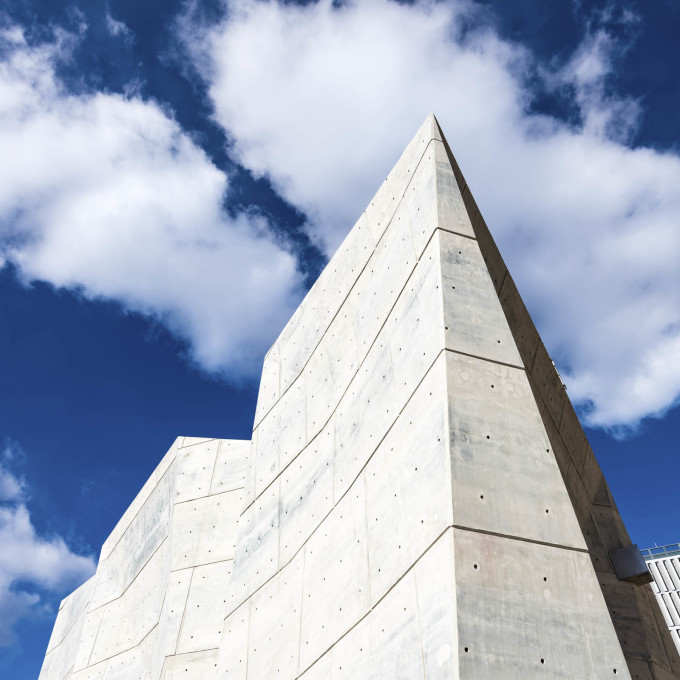
This public acceptance provides a striking counterpoint to the fate of numerous earlier, mid-twentieth century concrete structures, which continue to fall to wrecking balls around the globe. Was there just not enough concrete in them? This brutalist strain of modernism shares many of the same aspirations as the salt shed building: a purposeful embrace of the mass inherent in a material that exudes permanence and importance; a sculptural dynamism that belies this weight; and a boldness achieved through the combination of these two tied together in a strong form.
This approach was criticised decades ago by Robert Venturi as representative of an unnecessarily “heroic and original” approach to architecture, but is now being championed again (for the same reasons) by a new generation of architects, signalled by a slew of publications such as Heroic: Concrete Architecture of New Boston by Mark Pasnik, Chris Grimley and Michael Kubo, and Space, Hope and Brutalism, Elain Harwood’s leviathan edition that befits its heavyset subject. Meanwhile, many landmarks of this approach continue to be threatened. Paul Rudolph’s 1960s Orange County Government Center in Goshen, NY, for example: this case is especially troubling as the building has come up against a crusade baying for brutal blood, despite a pool of private funding that has been made available to save and repurpose the structure.
Back at the salt shed, these cultural debates seem distant. Perhaps, because human habitation forms no part of its remit, the structure can be read more like a sculpture perfectly suited to its task. Maybe it is down to the iceberg-like form that rises in an uplifting gesture, conspicuously avoiding any of the dark, melancholy spaces typical of its earlier brethren. Or it could be that we are only able to accept a milder brand of formalism in architecture; in this case, where the shape of an object is neatly reflected in the shape of its container. While this doesn’t reflect badly on the building itself, it does on broader cultural values: we have become better at honouring our snowstorms – which we now give names – than the heroic architecture of a previous generation.
Further reading: go store crazy with uncube Magazine No.39: Storage and for brutalism fans: #SOSBrutalism




